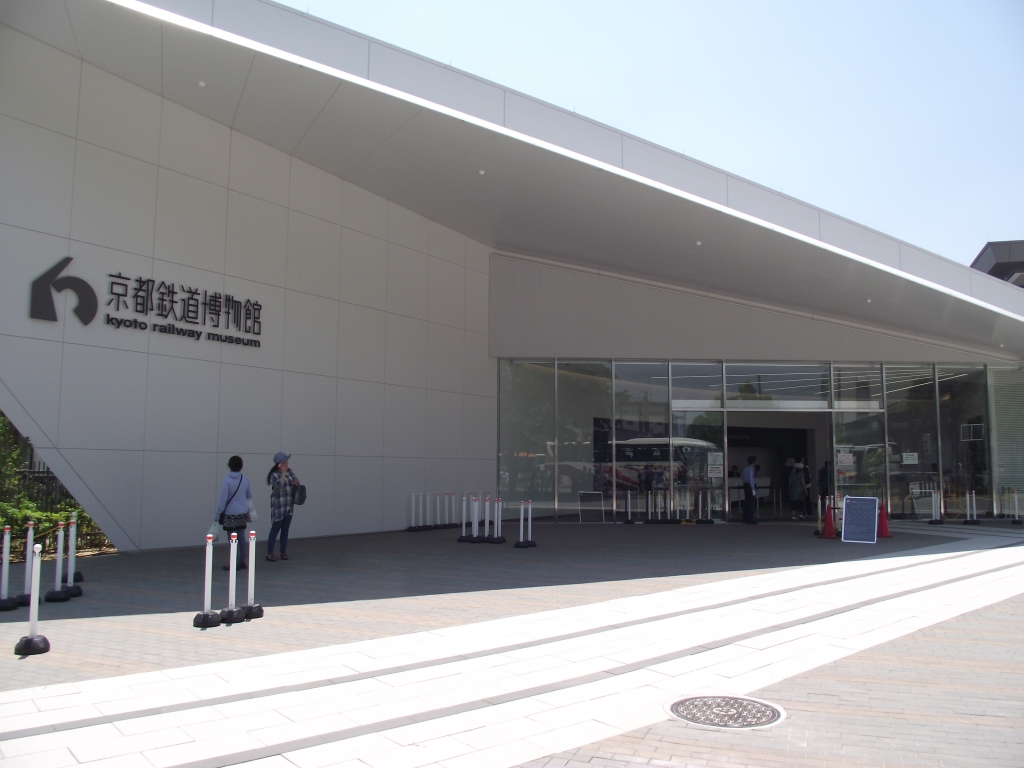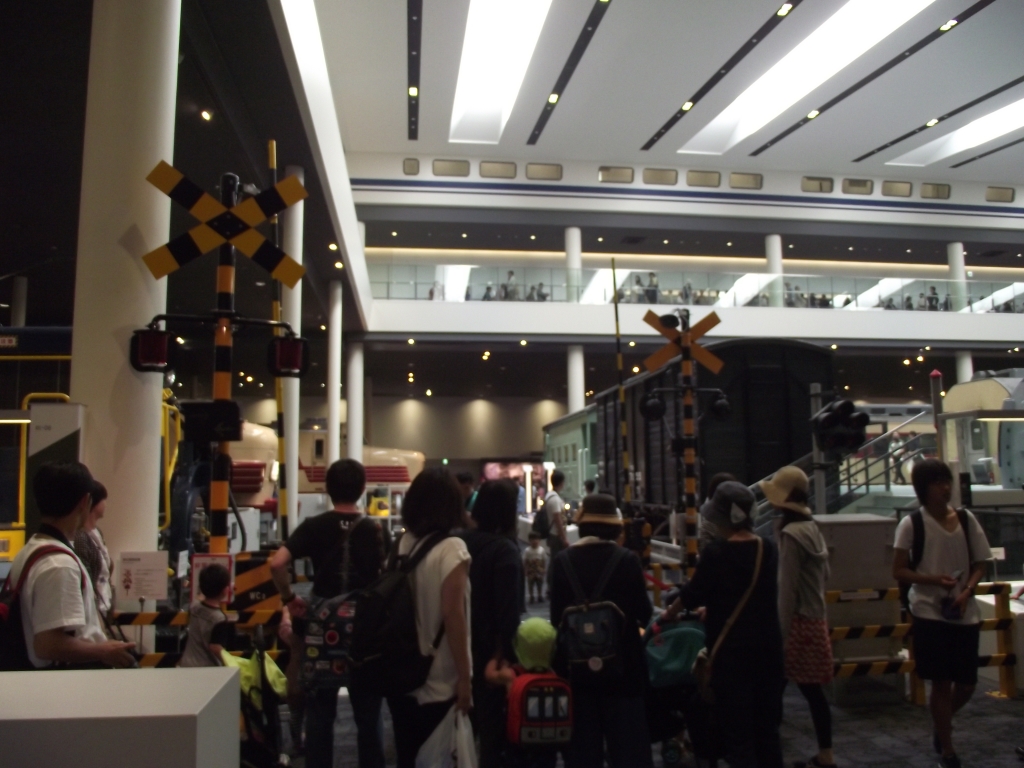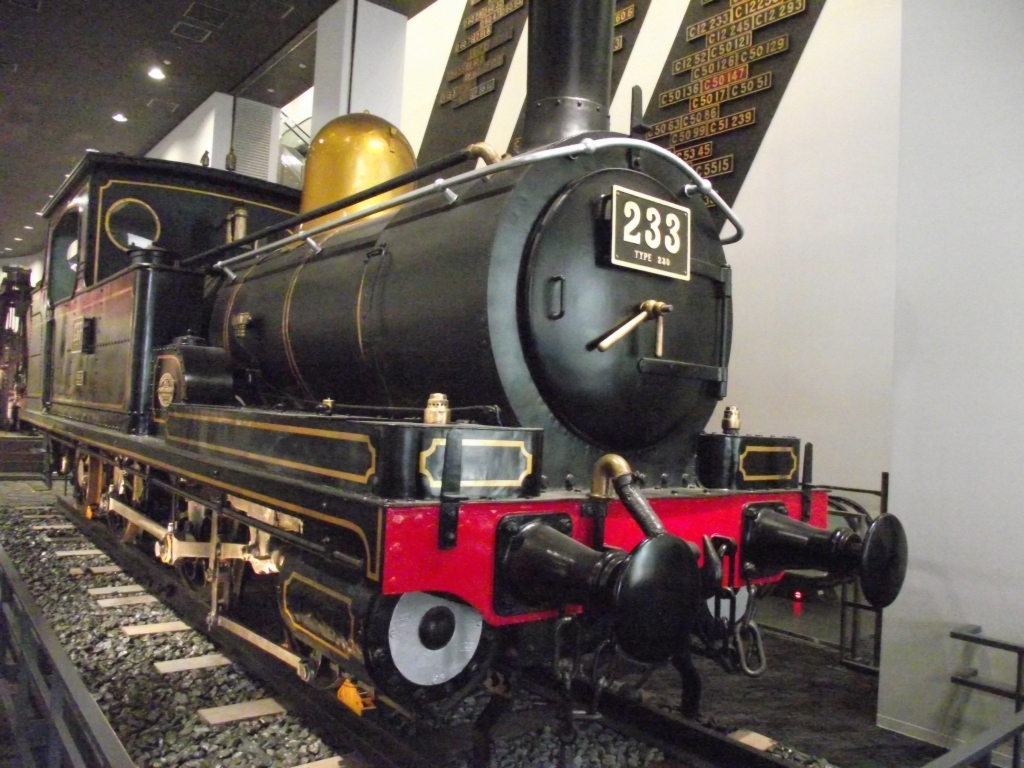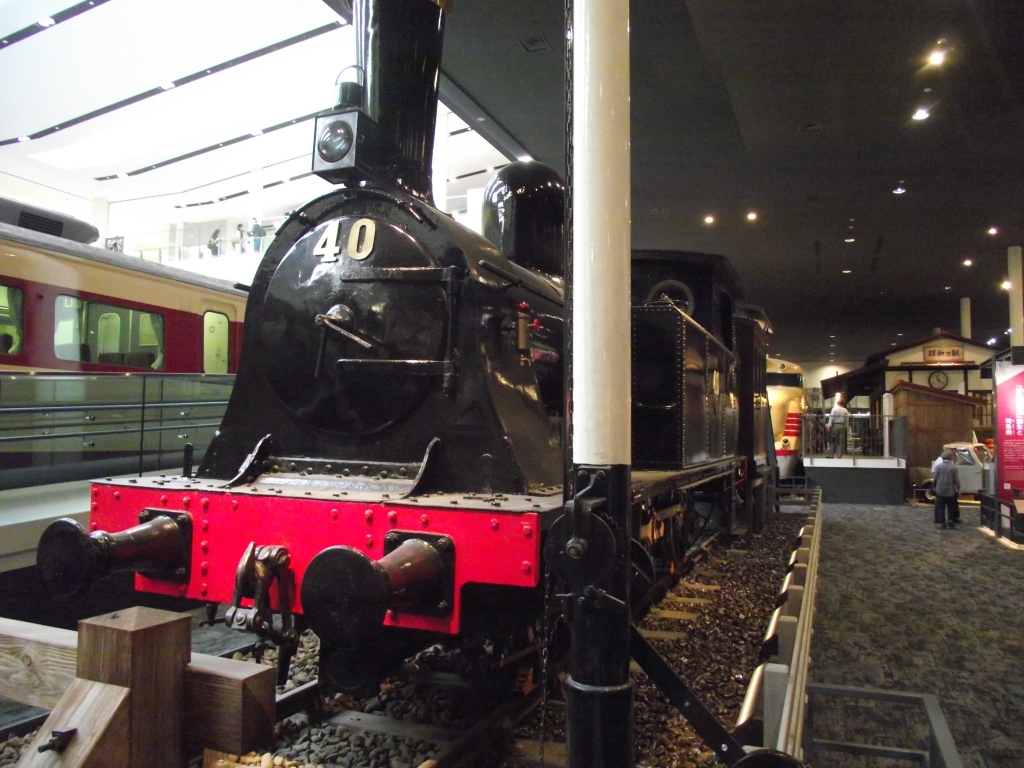
Located
on the tri-angular junction of the Tōkaidō Main Line & the Sanin
Main Line and opened in April 2016, it houses JR West's collection of
historic stock from both the former Umekōji Steam Locomotive &
Ōsaka's Modern Transportation Museums
KYŌTO RAILWAY MUSEUM
The railway
museum in Kyōto, which opened on 29 April this year, is the result of
amalgamating the existing collections at Umekōji (Kyōto) (for which see
Bullet-In No. 83, p.32-35, article by Des Hill on Umekōji, and our
former chairman Richard Tremaine’s report on his visit there in Nov 2014 and,
much earlier, John Smith’s 2000 article in Bulletin-In 34,p28) and at
Bentenchō (Ōsaka), which is now closed. The new museum occupies the
same site as before at Umekōji, and on 20 May I walked there in about
20 minutes (Richard seems to have taken only 15!) from Kyōto station,
which was completely rebuilt in the 1990s. Exit the station on the
north side, head west along the Shichi-jō Dōri, and you will find it well
signposted.
Adult entrance
fee is ¥1200, quite steep for a Japanese museum, but understandable
when you see what it must have cost. It was pretty crowded, with a long
queue for the restaurant, which I didn’t need. There was some space
outside with tables and chairs, which I thought inadequate for the
number of visitors, and not much seating inside.
The oldest
British locomotive I saw was a “British railway vehicle for gradient
use”, type 1800 tank, made in the UK by Kitson of Leeds in 1881, which
later on was sold to the Toyo rayon factory and was in use until 1964.
An early example of a home-made locomotive is the oldest mass-produced
Columbia type tank from 1903, manufactured by Kisha Seizo Kaisha (here
spelled “Kwaisha”, as often) in Ōsaka: this and no doubt several
others, is a designated important
national treasure. The roundhouse includes the 2-6- 0 loco made by H.K.
Porter of Pittsburgh, PA. in 1880, known as Yoshitsune; a C62 from
1948, the largest passenger steam loco; and a tank loco from 1901 made
by converting it from a British-made tender. There are also several
electric locos, the oldest I saw being an EF52 by Hitachi from 1928.
The main hall includes a level-crossing, complete with flashing red
light and bell, a reconstruction of a Meiji period station, and a
replica of James Watt’s steam engine. The history, right back to 1872,
is well covered in various exhibits, with captions in Japanese and
partly in English, and the whole business of railway operation is
comprehensively explained in all its aspects, from driver training to
electric traction with direct and alternating current. I didn’t have
time to go up to Level 3, where there is a “sky terrace” with a fine view
over Kyōto, to judge from the souvenir book, which I bought in the
museum shop for ¥1000. Well worth a visit when you are in Kyōto.
Earlier I spent
three or four days in Kyūshū, and despite the April earthquake in
Kumamoto prefecture, which sadly caused severe damage to Kumamoto
castle alongside the human cost, on 17 May rode the shinkansen from
Kagoshima (dep. 14:30) to Hakata (arr. 16:51) on a temporary timetable,
which took about 45 minutes longer than usual. Clearly the engineers
had worked hard to repair the track in time for the extended Golden
Week holiday at the end of April.
Charles Rudd
The main
features of the Twilight Plaza are two electric locomotives of a
semi-streamlined EF58 150 built in 1958 by Tōshiba and EF81-1 built in
1974 by Hitachi. The EF58, 2C+C2, was a DC electric used to be the main
force of passenger trains before the EMU era and served main lines in
the all parts of DC electrified territory, starting with the Tōkiado
Main Line. The EF81, Bo-Bo-Bo, is an AC-DC dual voltage locomotive that
is capable of running through three different electrification
territories (20kV 60 Hz AC, 1500V DC and 20kV 50 Hz AC). The EF81-1
exhibited is in the special livery of the Twilight Express which used
to run along the Sea of Japan coast corridor between Ōsaka and Sapporo.

A site in the
main building area seeing a combination of freight cars, a brake van of
Yo-5008 and a van type goods wagon of Wamu 3500, with an assortment of
level crossing equipment in front.

Looking down
from the upstairs in the main building area are three sets of control
cab cars from the left; the 500 series Shinkansen, Kuhane-581-15
sleeper EMU and Kuha 489-1 AC EMU.

Another
historic steam locomotive exhibited in the main building area is #40,
0-6-0 Tank, a member of type 1800 series imported in 1881 from the
Great Britain. In favour of its superior performance, some tens of this
type were introduced and used all over the country, particularly on
main lines that included tough grading sections.